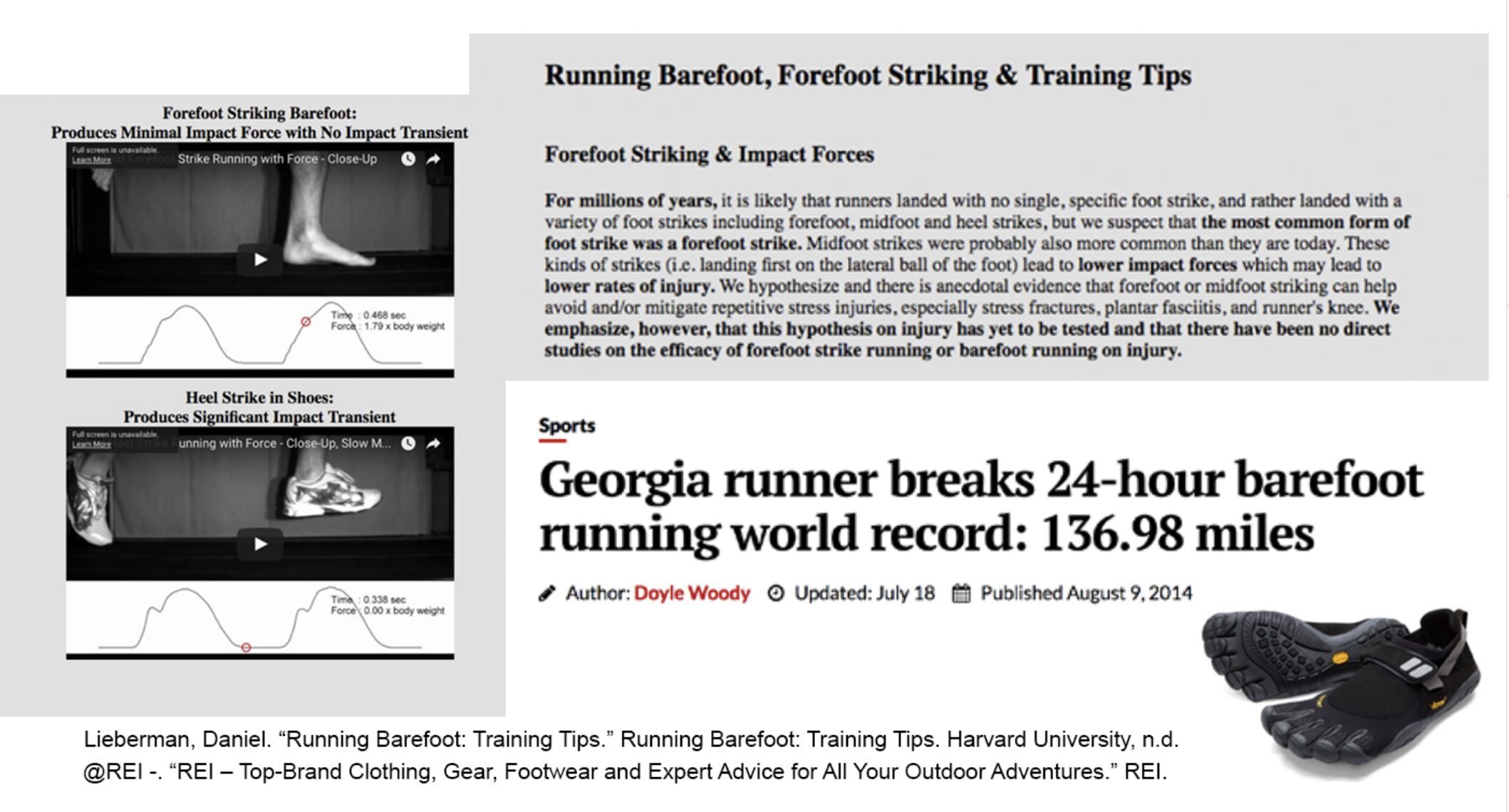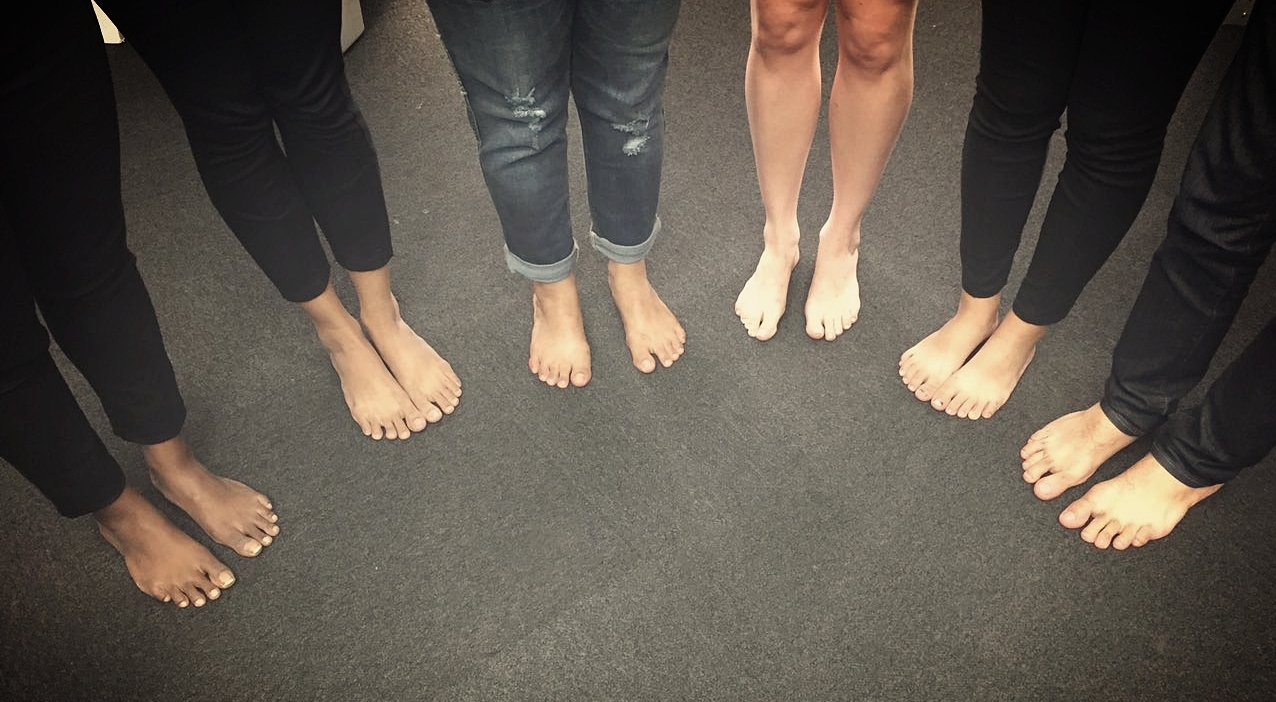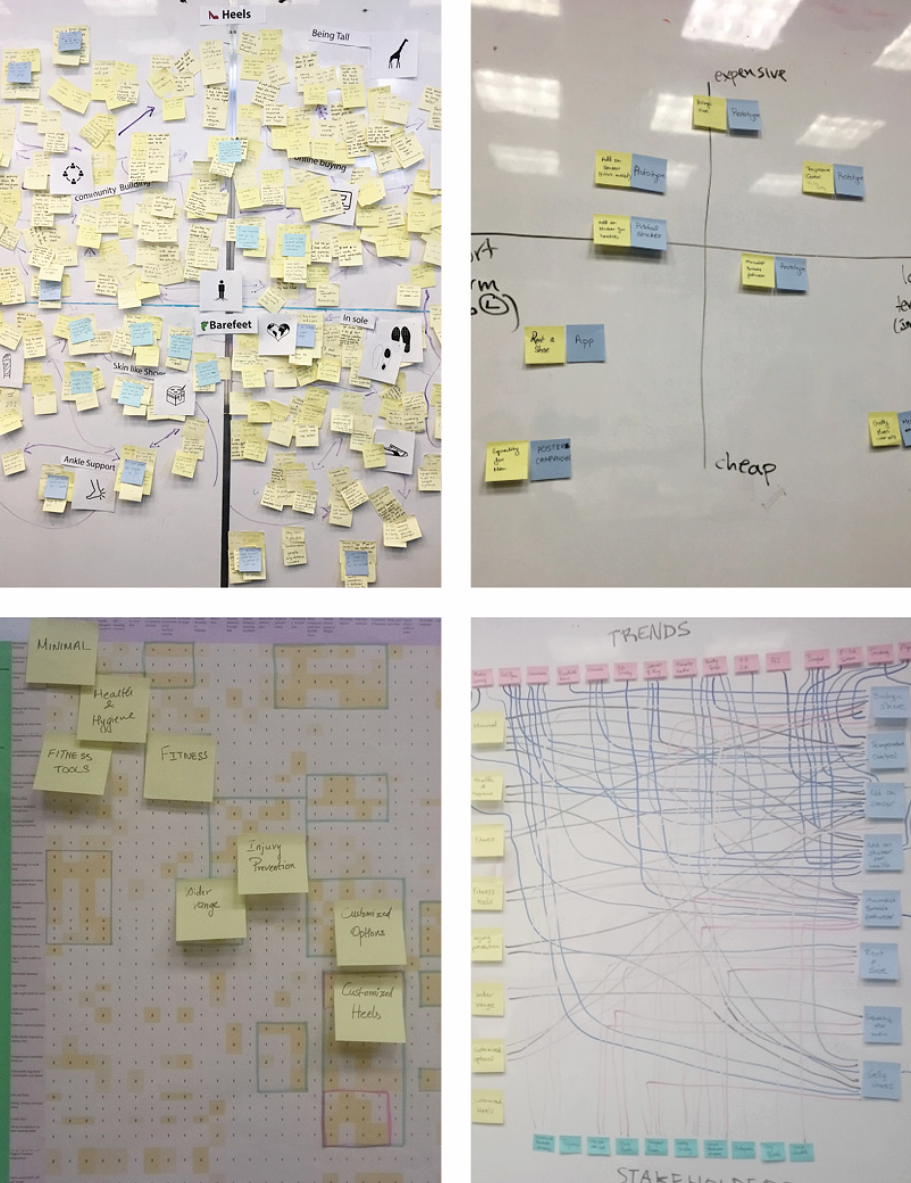
DESIGN RESEARCH
Objective: To conduct contextual research about the Local Culture of Footwear in Savannah, apply methods of ethnography to find problems and propose innovative solutions.
Process: Research - Observations, Interviews, Documentation. Surveys, Interviews, Analysis and Synthesis of data, Insight generation, Creative facilitation, Concept development, Verbal & Visual communication, and Storytelling.
Solutions: Products, Services and Experiences.
The research was conducted over a span of 12 weeks which involved various research techniques and strategies to analyze insights. Through our secondary and primary research, we found 2 areas of interest.
Learnings: The purpose of a product is different for different users. Some look at shoes at protection and others wear them to enhance their appearance and feel confident. A product is more meaningful when it connects with the user emotionally.
Time: 10 weeks
Role: Researcher, Visual Design, Final Presentation Design


Secondary Research
Methods used: Buzz Reports, Offering-Activity-Culture Map, Intent Statement, Popular Media Search, Innovation Evolution Map and Interest Group Discussion.
Through our research, we were able to find out and focused on two topics of interest: men who wear heels and people who love to be barefoot, with a focal point on barefoot runners.
A key point for men who wear heels is that is hard to find heels in men's sizes, so often men buy heels made for women in big sizes, and barefoot runners face hazardous and unhygienic conditions.


Offering Activity Culture Map
With Footwear as the central node, we started building the first set of subnodes based on activities that utilized footwear. From these subnodes, we built another round of subnodes based on the culture surrounding the activity. We used this map to analyze footwear in general, and later we did it for our two points of interest.

Primary Research
Methods used: An immersive experiment, Cultural Probes, Interviews.
Immersive Experiment: While trying to find answers to our several questions, we decided to do an immersive experiment to understand the essence of footwear. The experiment involved being barefoot the entire day while going through daily activities. The diversity in the team offered significant knowledge with different activities like walking on the pavements, driving, grocery shopping, attending classes, travelling by bus and other daily activities. This experiment was an eye opener for most of us and it helped us with constructive information.

Barefoot immersion experiment

Interviews
As an integral part of our primary research, we interviewed 18 people.
To find our information about men who wear heels we interviewed men who wear heels, drag queens, fashion experts and random people to acknowledge what they think about men who wear heels.
We got to interview Andrew Snope, the runner who World Record of more miles ran barefoot in 24 hours, who gave us many insights about running barefoot and the human feet.
With our Barefoot research, we were often recommended to read the book “Born to Run” by Christopher McDougall. Likewise with our Heels research, in all our interviews with men who wore heels, they acknowledged the fact that heels were originally invented for men.

Cultural Probes and Surveys
To get qualitative information from the respondents, we designed two probes and analyzed them across two different locations resulting in four datasets.

Primary Research Video

Analyzing data
The next step was analyzing the data. In this step, we compiled the data collected in more than 500 sticky notes and applied different techniques of analyzation to find emerging concepts. We did 4 rounds of clusters until we ended up with 25 categories.


Concept Development
The last step was to develop solutions for the challenges that we discovered. For this part, we needed to create emerging concepts and apply techniques of conceptualizing, prototyping and designing. We brainstormed more than 200 concepts individually and as a team, then we ranked concepts according to their relevance to our research and the problems we found, and finally decided to propose the following concepts, for both areas of focus.


Solutions
Methods used: Conceptualizing, sketching, prototyping, and designing.
Although at the analysis stage we had a basic concept for the solutions, the full idea was built at this stage. We conceptualized each idea and how they helped solve the problems identified through our data.








The final presentation was designed as a walkthrough experience, where the stakeholders could view the process and the solutions at their pace. The entire experience was guided by the team, who answered questions and took individual feedback allowing us to gather more learnings.

Making connections with the data


Video - Final event for Local Culture of Footwear in Savannah
